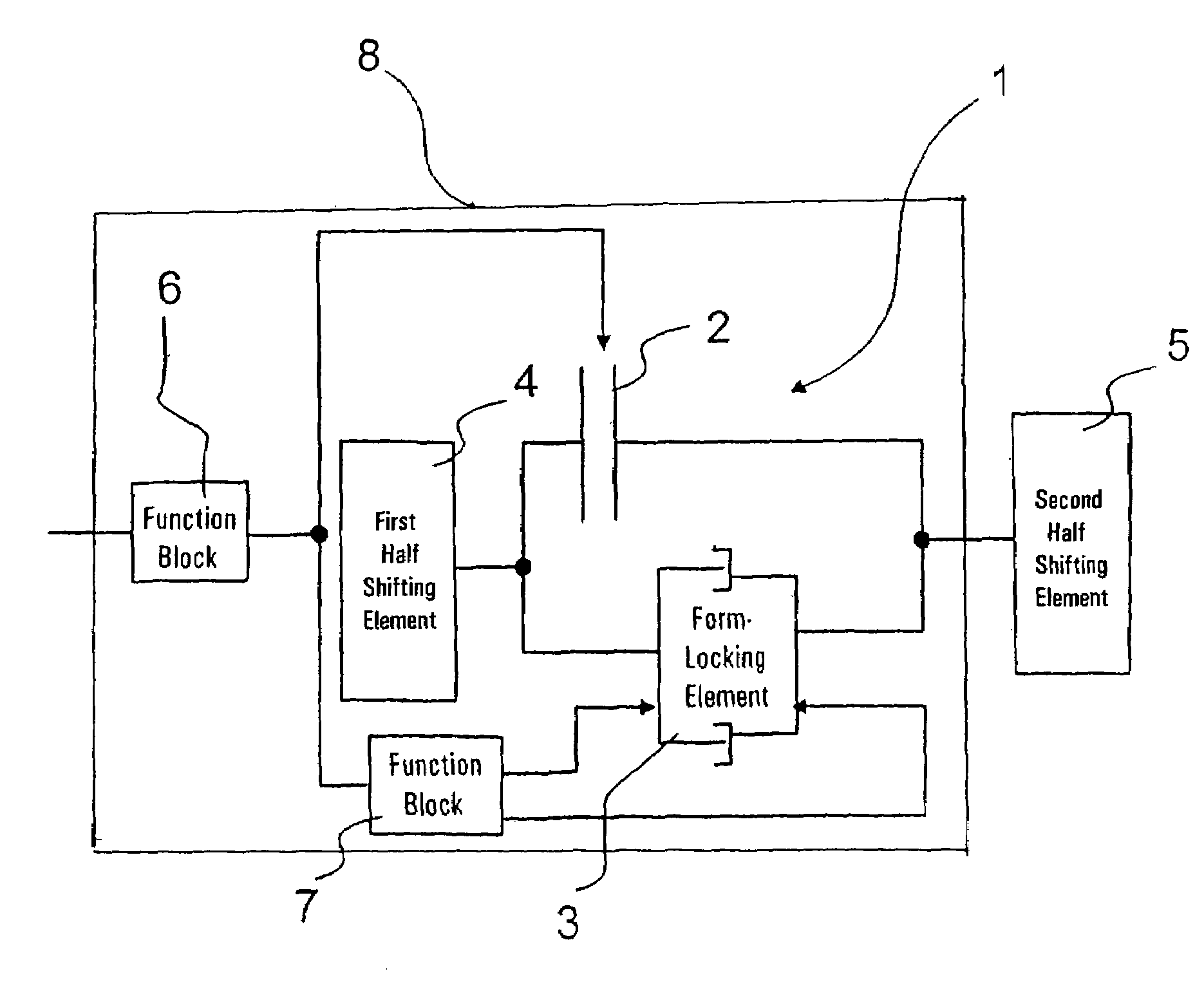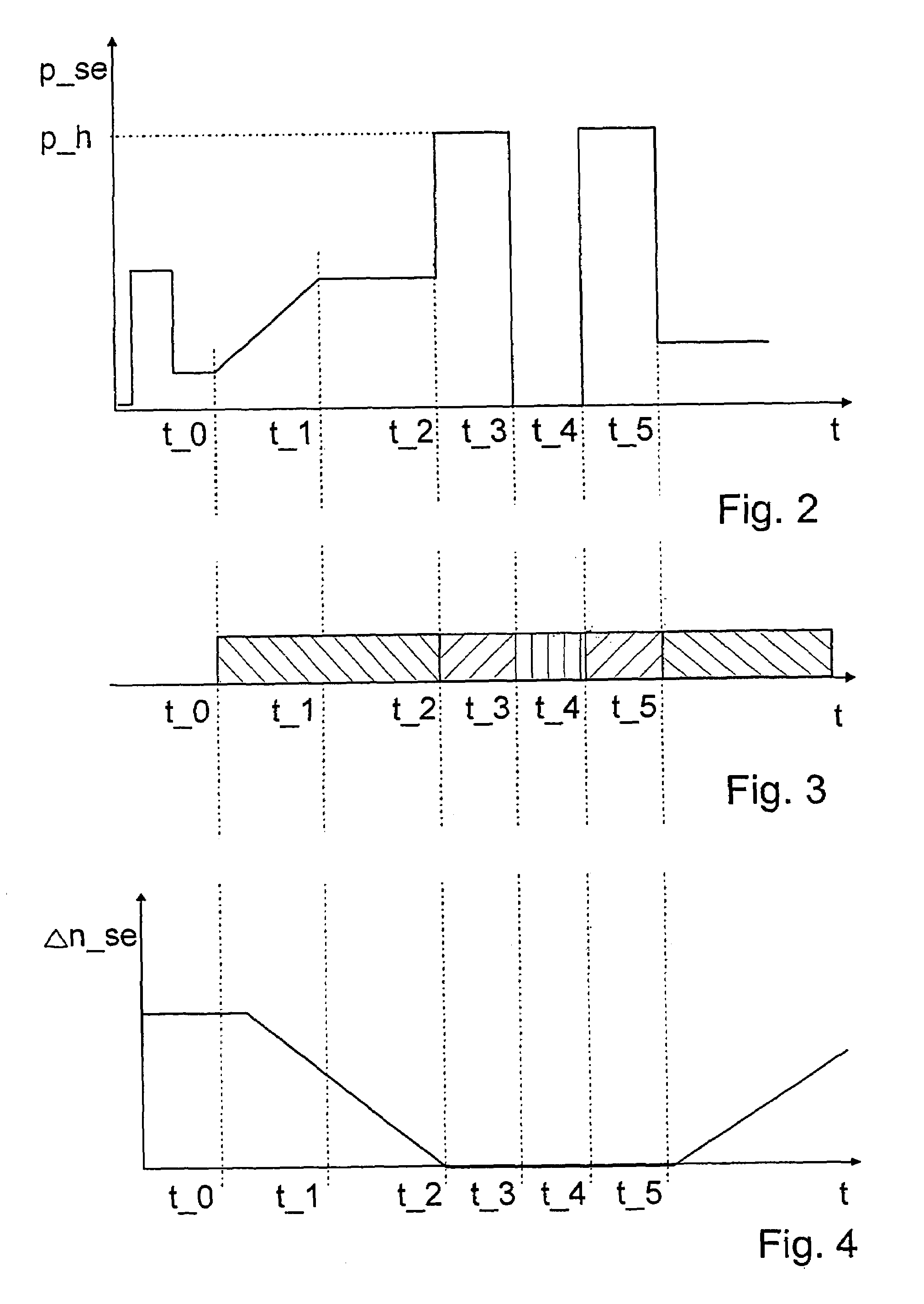Method and device for control of a shifting component of a stepped automatic transmission
a technology of stepping automatic transmission and shifting component, which is applied in the direction of clutches, mechanical equipment, gears, etc., can solve the problems of high energy loss on the side the essential loss of the hydraulic pump, etc., and achieve the reduction of the transmission capacity of the frictionally engaged element, the reduction of the operating force acting, and the reduction of the power intake of the hydraulic pump.
- Summary
- Abstract
- Description
- Claims
- Application Information
AI Technical Summary
Benefits of technology
Problems solved by technology
Method used
Image
Examples
Embodiment Construction
[0021]In FIG. 1 is schematically shown a shifting component 1 of a stepped automatic transmission (not shown in detail) for a vehicle and which can be used to adjust one or more gear steps of the stepped automatic transmission. To that end, the shifting component is controlled and engaged or disengaged in combination with other shifting components of the stepped automatic transmission so as to bring in one power flow of different pairs of gears of the stepped automatic transmission.
[0022]The shifting component 1 is formed by one frictionally engaged element 2 and one form-locking element 3, a torque being passed in engaged state of the shifting component from a first half 4 of the shifting component to a second half 5 of the shifting component or viceversa.
[0023]The first half 4 of the shifting component and the second half 5 of the shifting component and the rotatable or non-rotatable parts of the stepped automatic transmission connected therewith are shown schematized in FIG. 1 as...
PUM
 Login to View More
Login to View More Abstract
Description
Claims
Application Information
 Login to View More
Login to View More - R&D
- Intellectual Property
- Life Sciences
- Materials
- Tech Scout
- Unparalleled Data Quality
- Higher Quality Content
- 60% Fewer Hallucinations
Browse by: Latest US Patents, China's latest patents, Technical Efficacy Thesaurus, Application Domain, Technology Topic, Popular Technical Reports.
© 2025 PatSnap. All rights reserved.Legal|Privacy policy|Modern Slavery Act Transparency Statement|Sitemap|About US| Contact US: help@patsnap.com



